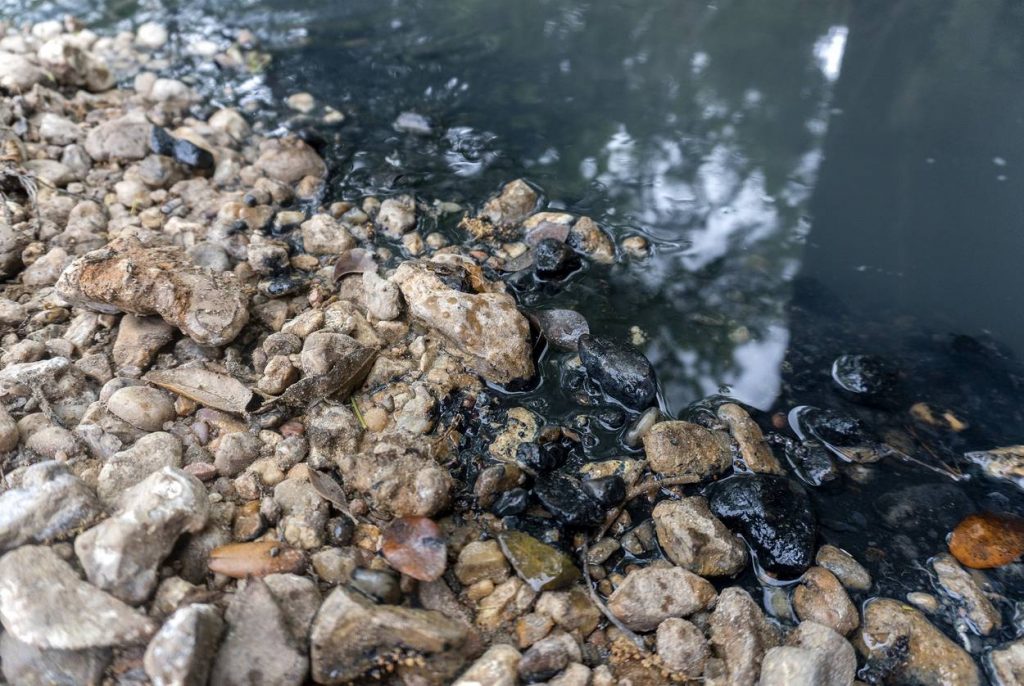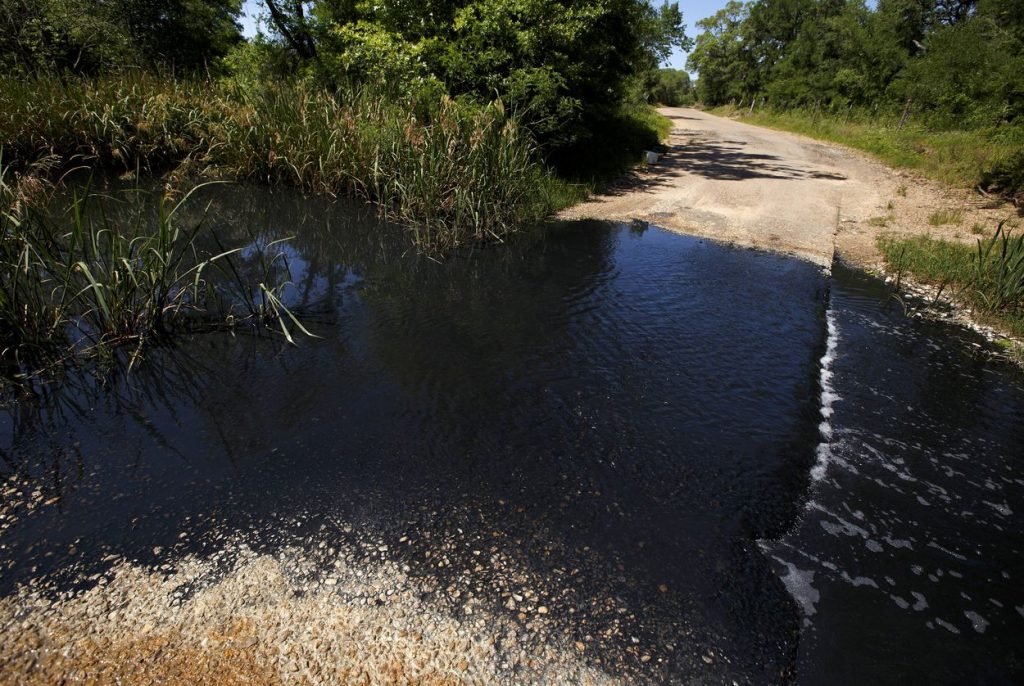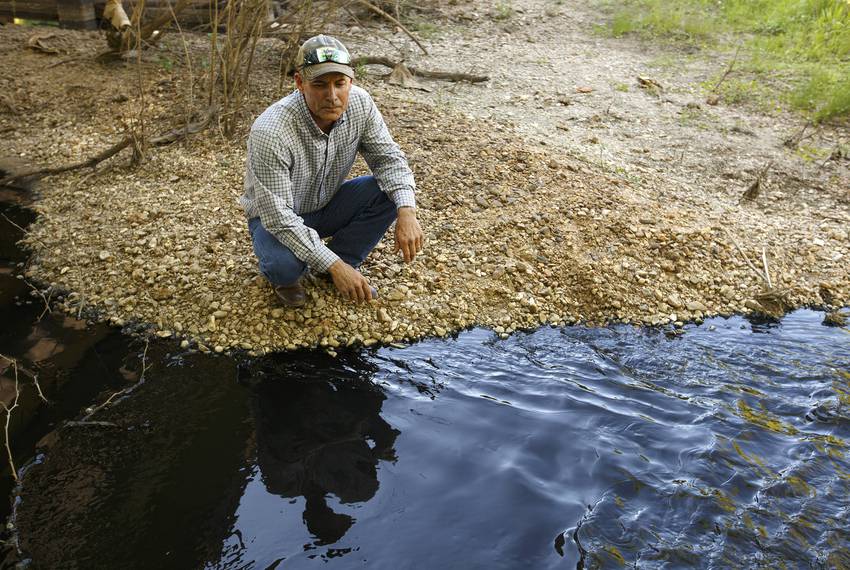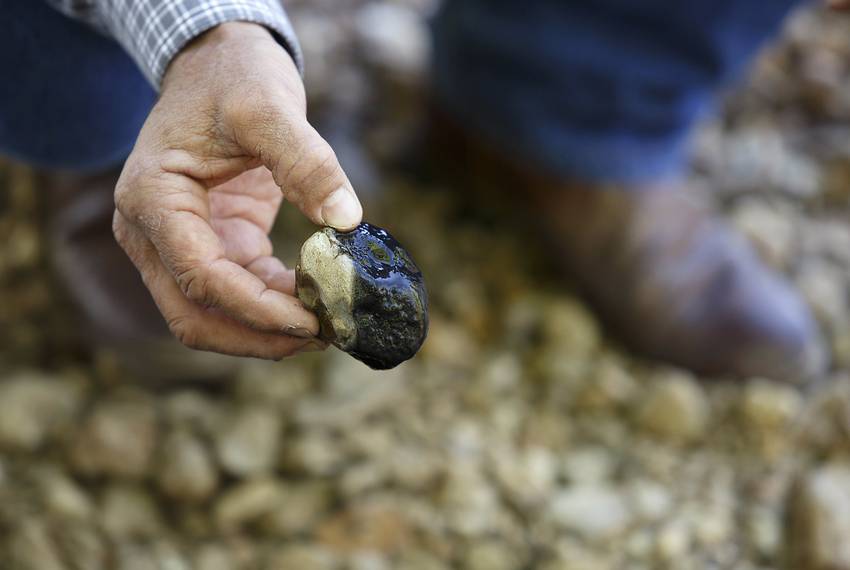
A disturbing report published by the Texas Tribune on April 17 demonstrates the colossal effect that one’s actions and negligence can have on their neighbors downstream, and highlights the absolute necessity to be hyper vigilant about what we introduce to our waterways.
The Tribune’s article details the upsetting story of a family who lives on 10 acres along Skull Creek, south of the I-10 and TX-71 interchange at Columbus. Since early February, the normally clear creek has turned pitch black, and a headache-inducing chemical smell has saturated the air around the water. The family can not even step outside of their home without feeling ill.
Though nobody has claimed responsibility, the discoloration can be traced upstream to property owned by an oil and gas waste recycling facility. The Texas attorney general has sued the company, alleging that the company “illegally discharged industrial waste into the creek and stored that waste without a permit.”
The polluted water in Skull Creek enters the Colorado River, which carries the toxic waste through southeast Texas and introduces it to Matagorda Bay on the Gulf Coast. However, because nobody has officially been held culpable, clean-up efforts have not yet occurred. Skull Creek has been flowing black for 10 weeks, devastating the lives of Texans who live on its bank and polluting water used for irrigation, livestock and recreation. So far, the only thing that has been done about it is bureaucratic bickering, head scratching, finger pointing and paperwork filing.
Left: Colorado County Groundwater Conservation District board member Andrew Labay, who is also a fisheries biologist, examines the banks of Skull Creek. Right: Labay holds a rock from the creek bank covered in a black substance. Michael Stravato for The Texas Tribune
Shocking situations like this emphasize the constant threat posed to our lives by the absent understanding of watershed behavior exhibited, over and over again, by government officials and the public. The black water of Skull Creek has tested positive for the presence of hydrocarbons that are toxic to human health. An appropriate response would be to immediately determine the source of the pollution, cut that source off, and begin the task of cleaning up and restoring the creek. Toxic pollution in waterways is an emergency, and should be treated as such.

What would happen if a fire department waited for the courts to decide who was at fault for a fire before they responded to it? We know there is extraordinary value awarded to our structures because when one is threatened, the threat is addressed immediately. To not extend that same level of appreciation and protection to our water is absurd and reckless, as the situation on Skull Creek clearly reveals.
This is why WVWA insists that a watershed perspective must be ingrained in the psyche of all so that every decision we make weighs the risk it will impose on our neighbors and our collective future. Water connects us to each other. What somebody does upstream affects you, and what you do affects those downstream—even if you don’t live on the shores of a waterway. A deeper, common understanding of our symbiotic relationship with streams, creeks, rivers, lakes, aquifers and the landscape needs to be obtained in order to prevent the careless destruction of our most precious resource, and to respond with vigor and immediacy when the health of that resource is jeopardized.
Read the Tribune’s article here: https://www.texastribune.org/2019/04/17/texas-attorney-general-sues-inland-recylcling-and-remediation/

